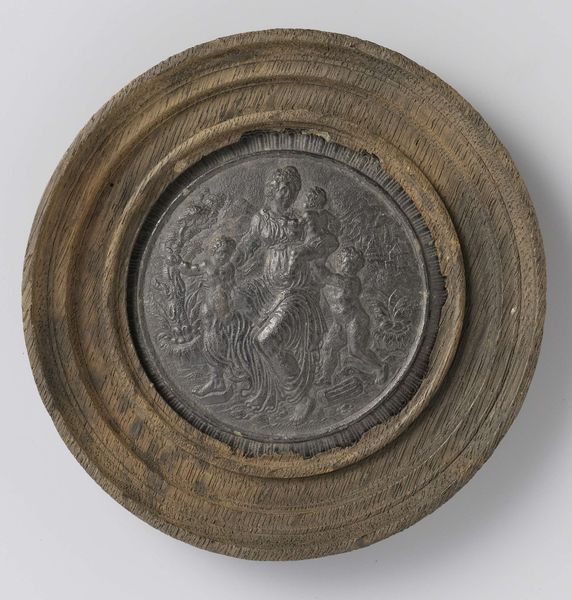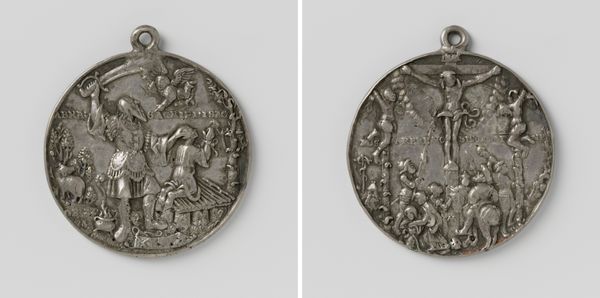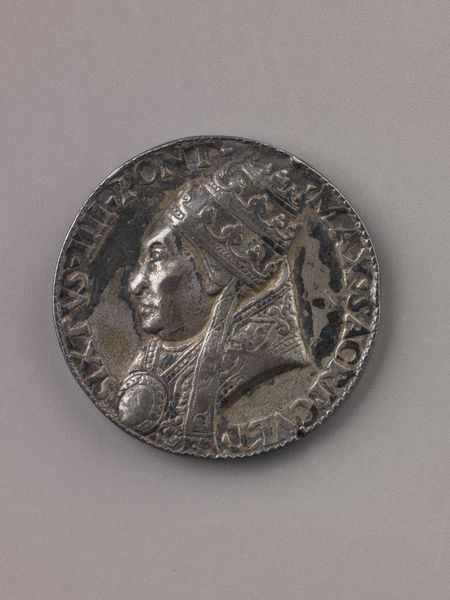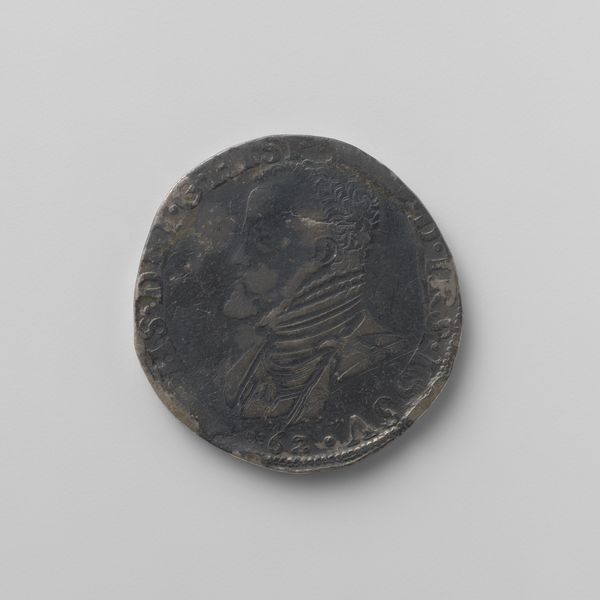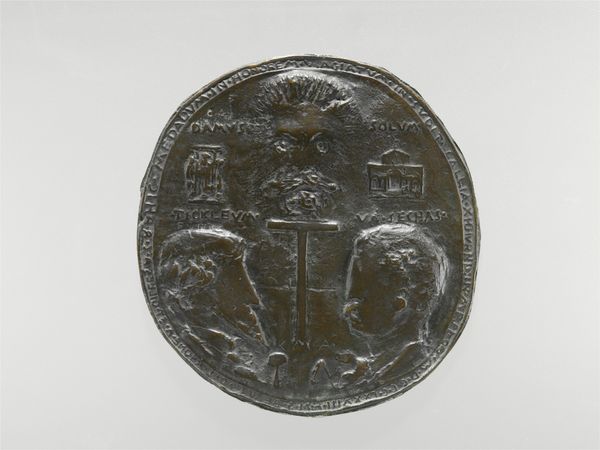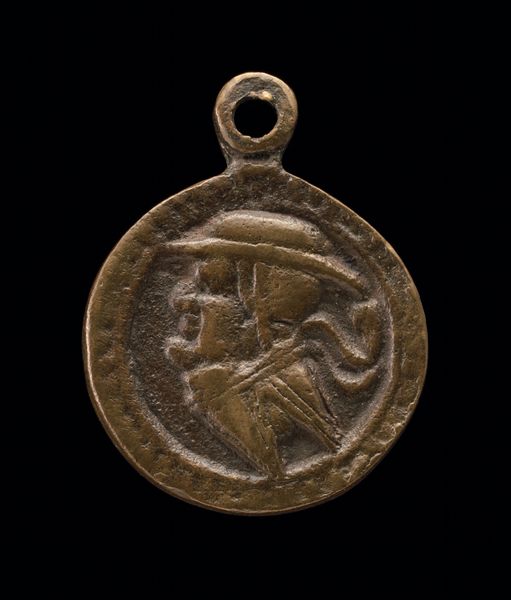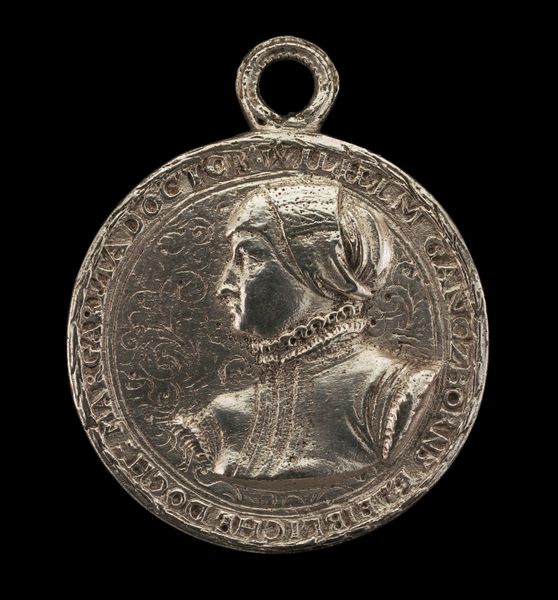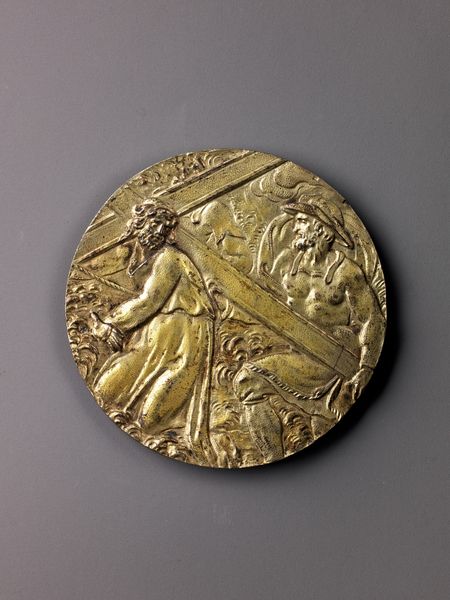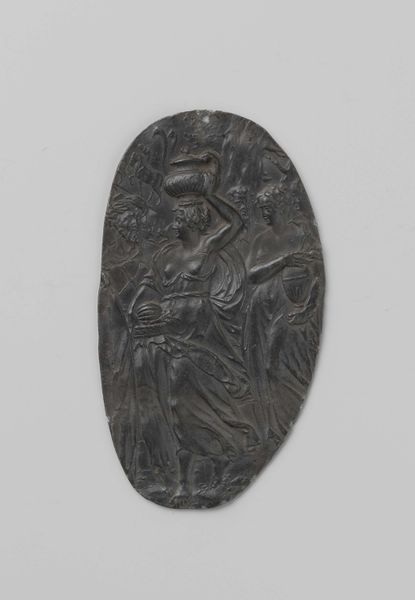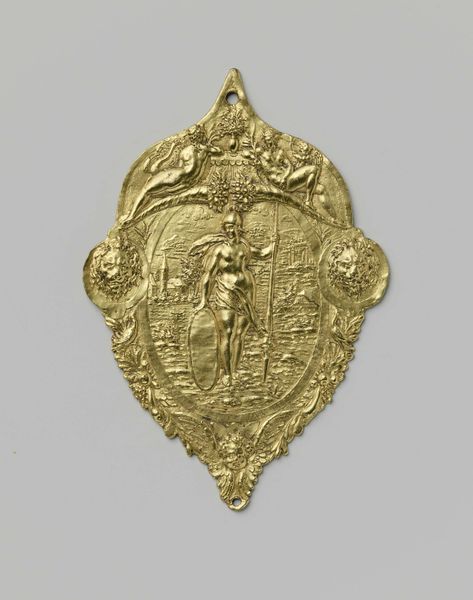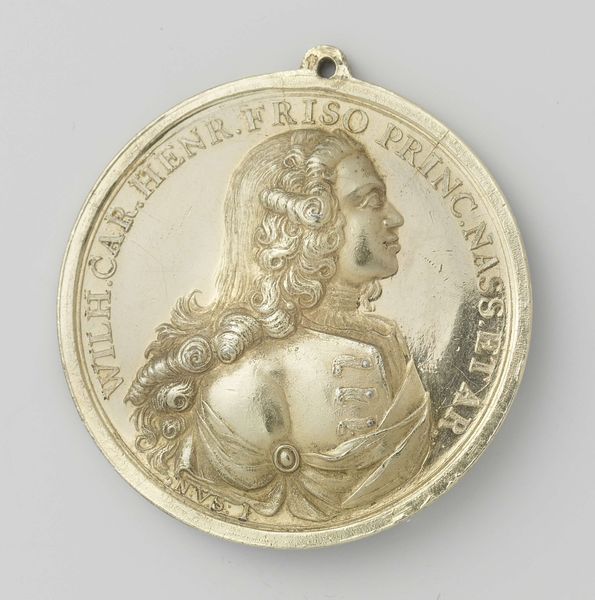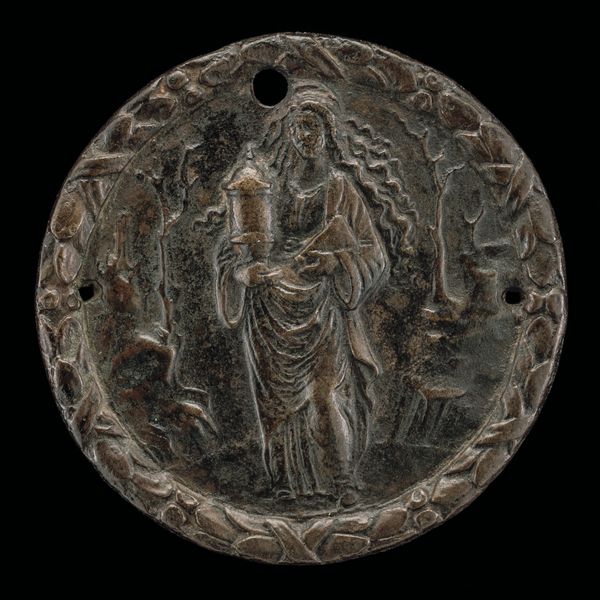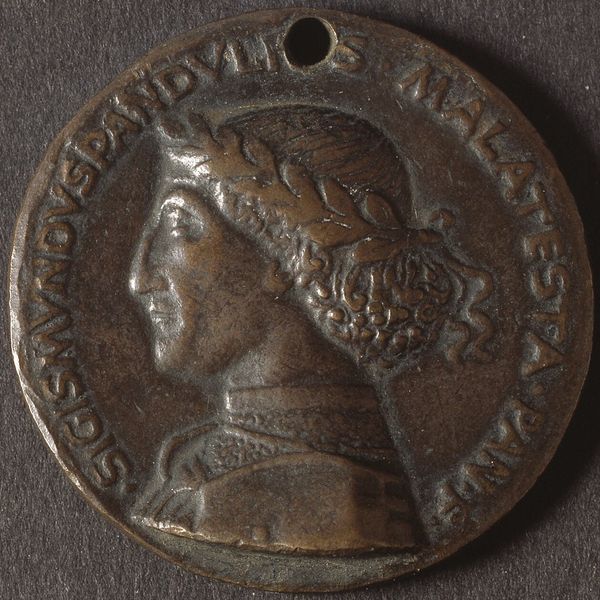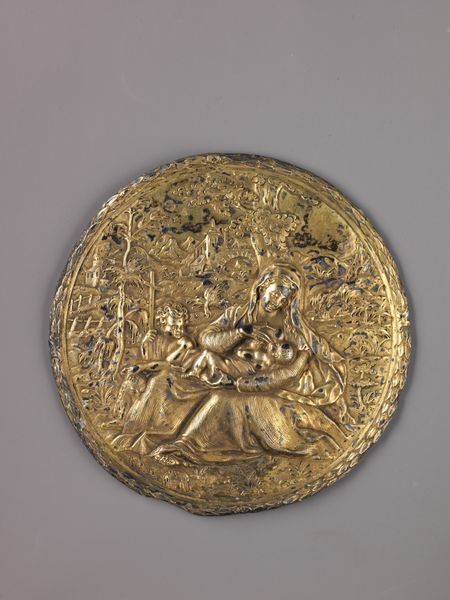
bronze, sculpture
#
portrait
#
sculpture
#
bronze
#
11_renaissance
#
sculpture
Dimensions: height 12.8 cm, width 9.7 cm
Copyright: Rijks Museum: Open Domain
Curator: Welcome. Before us, we have an interesting bronze medallion portrait of Christina of Sweden, created sometime between 1700 and 1800, here at the Rijksmuseum. What strikes you about it initially? Editor: Well, immediately I'm intrigued by the martial imagery. The helmet, the eagle crest… it casts Christina in a very specific, powerful light. Almost… masculine, wouldn’t you say? Curator: The choice of bronze is certainly significant. As a material, bronze held connotations of power and permanence, favored by ancient rulers and empires. How do you read that in relation to Christina’s complex historical context? Editor: Ah, absolutely. Consider Christina’s own rejection of traditional gender roles! Her abdication, her conversion to Catholicism, her patronage of the arts... This medallion seems to intentionally cultivate an image of Christina as an iconoclast, a disruptor of societal norms, immortalized through this specific medium. But I wonder about the choice of her being sculpted *after* her abdication? Curator: Indeed, the timeframe suggests it was produced well after her reign, likely commissioned to memorialize her legacy or to potentially bolster her image amidst various political and religious interpretations of her choices. I'm drawn to how the process itself must have involved detailed mold-making, precise casting… It highlights a skilled artisan responding to specific demands and likely certain artistic tastes during that era. Editor: It also raises questions about access and distribution. Who owned these medallions? Who was meant to view them, and what message were they meant to receive? This ties into the production and labor, as you pointed out, and to its reception. This piece reflects Christina, but also those who desired to be associated with her image after the fact. Curator: Precisely. Looking at it now, thinking of all the steps, skills and choices made, really makes one question if she had an intent for this work or it was simply a remembrance or interpretation. Editor: Food for thought, definitely adds new depths to this historical work!
Comments
No comments
Be the first to comment and join the conversation on the ultimate creative platform.
